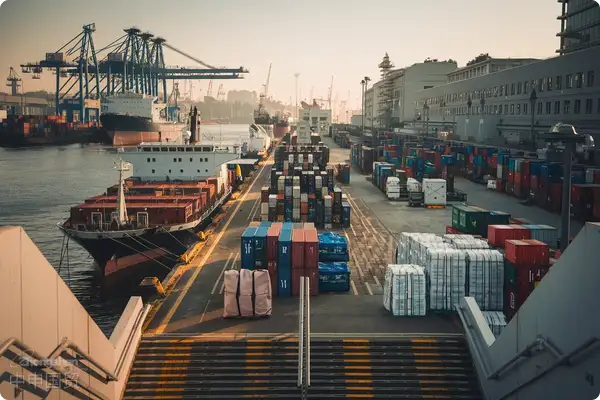- Shanghai Zhongshen International Trade Co., Ltd. - Two decades of trade agency expertise.
- Service Hotline: 139 1787 2118

Contents
ToggleSemiconductors in 2025Equipment ImportsNew market trends
Against the backdrop of the ongoing shift of the global semiconductor industry toward Asia, China's semiconductor equipment imports have maintained an average annual growth rate of 12%. According to the latest data from the General Administration of Customs, lithography machine imports in Q1 2025 increased by 23% year-on-year, while customs clearance time requirements for inspection equipment have been reduced to within 72 hours.
Core Customs Clearance Process Breakdown
The special regulatory requirements involved in the import of semiconductor equipment make its customs clearance complexity far exceed that of ordinary industrial equipment:
- Step 1: Technical Parameter Verification
- Submit the equipment technical white paper (including nanometer-level precision parameters).
- The declared power consumption must be consistent with the energy efficiency label.
- Step 2: Precise Classification of HS Codes
- The lithography machine falls under 8486.2030 and requires a resolution certificate.
- Wafer inspection equipment is applicable to additional clause 9011.8000.
- Step 3: License Processing
- The equipment listed in the "Catalog of Key Used Mechanical and Electrical Products for Import" requires approval documents from the Ministry of Industry and Information Technology.
- Equipment for processes below 10nm must apply for a "Dual-Use Items License."
Three Major Changes in Tariff Policies for 2025
- The provisional import tariff rate for semiconductor manufacturing equipment has been reduced from 5% to 3%.
- The import VAT on individual components is eligible for a 50% immediate refund upon payment.
- The tariff preferences for Korean equipment under the free trade agreement have been expanded to cover 92 tariff lines.
Risk Warning of Typical Cases
A certain enterprise imported a used etching machine without conductingEnergy Efficiency Re-inspectionLate declaration fees of 380,000 yuan were incurred. Key areas for attention include:
- The old equipment must provide the original manufacturer's energy consumption test report.
- The control system version must comply with CCC certification requirements.
- Components such as vacuum pumps must be separately declared for pressure vessel registration.
Criteria for Selecting Professional Agency Service Providers
- Qualification verification:Must possess the qualification to act as an agent for the automatic import license of electromechanical products.
- Hands-on experience:There have been no fewer than 50 cases of semiconductor equipment customs clearance in the past three years.
- The mainstream charging models in the industry in 2025 include:Establish a dedicated customs clearance channel for AEO certification
- Service Network:Dedicated inspection areas for semiconductor equipment are set up at major ports.
- Compliance System:Equipped with the EICC Global Trade Compliance Management System
Analysis of Common Declaration Errors
According to the 2025 customs audit data, 36% of declaration issues are concentrated in:
- Confusing the intended use of equipment (different regulatory conditions apply for R&D/production)
- Undeclared random software (requires separate confirmation of copyright registration)
- Ignore the environmental certification of the refrigerant in the temperature control system (related to the Montreal Convention).
Related Recommendations
? 2025. All Rights Reserved. Shanghai ICP No. 2023007705-2  PSB Record: Shanghai No.31011502009912
PSB Record: Shanghai No.31011502009912










